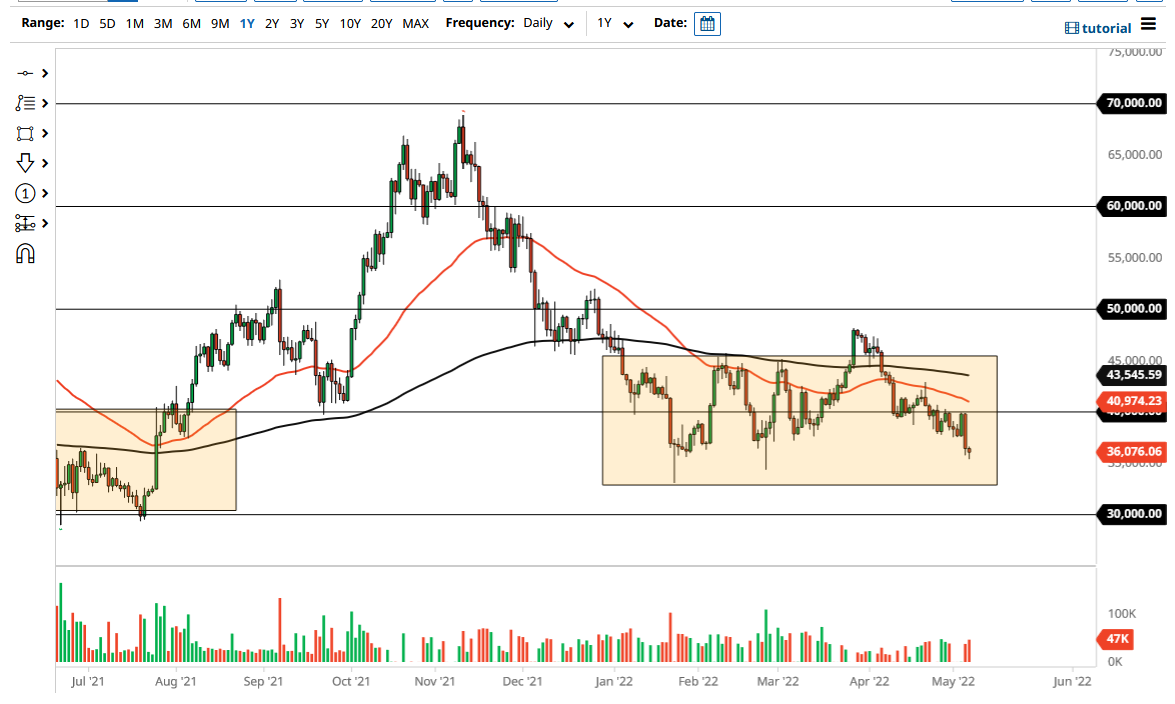Bitcoin fell a bit on Friday to show signs of weakness but also turned around as the US dollar calmed down quite a bit. Nonetheless, Bitcoin still looks rather negative in general, especially as the US dollar has been so strong. Keep in mind that Bitcoin is a risk appetite-influenced asset, and as long as the risk appetite is all over the place, Bitcoin will continue to be very noisy.
The $40,000 level above will continue to be an area that we need to pay close attention to, as it has offered such a significant resistance barrier. Any rally from the top of this hammer will more than likely go looking to that area, which will be like a magnet for price. Furthermore, the 50-day EMA is reaching the $40,000 level, so I think that adds even more credence to that idea as resistance is being found there.
If we were to break above the $40,000 level, then it is likely that we could go looking to the 200-day EMA, perhaps even the $45,000 level. The market is very close to the bottom of the overall consolidation that we have been in for a while, so it does make sense that we may attempt to rally. However, if we were to break down below the $35,000 level, it is likely that we could break down rather significantly. Because of this, the market would almost certainly go looking to reach the $30,000 level, which is the next large, round, psychologically significant figure.
If we were to break down below there, then we will almost certainly see Bitcoin end up in freefall. The market needs to see signs of strength rather soon, or we could see a major turn in the overall attitude. Keep in mind that Bitcoin needs to be paid close attention to, as the entirety of the crypto world is influenced by what happens here. As there is a severe lack of risk appetite, I fully suspect that Bitcoin could break down and enter the markets into what is known as a “crypto winter.” The size of the candlestick from Thursday certainly suggests that we are going to continue going lower. However, a bounce might simply be necessary just to build up more downward pressure.

